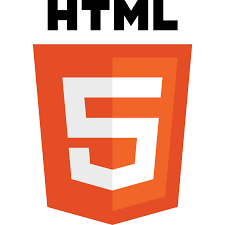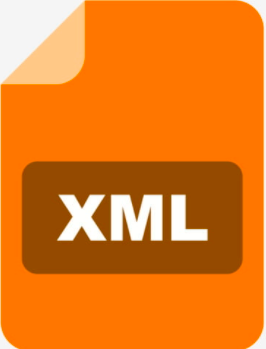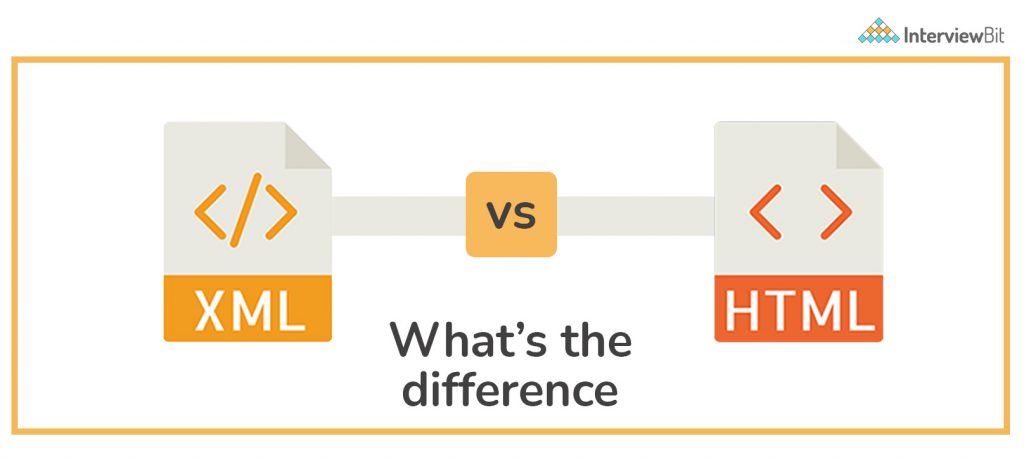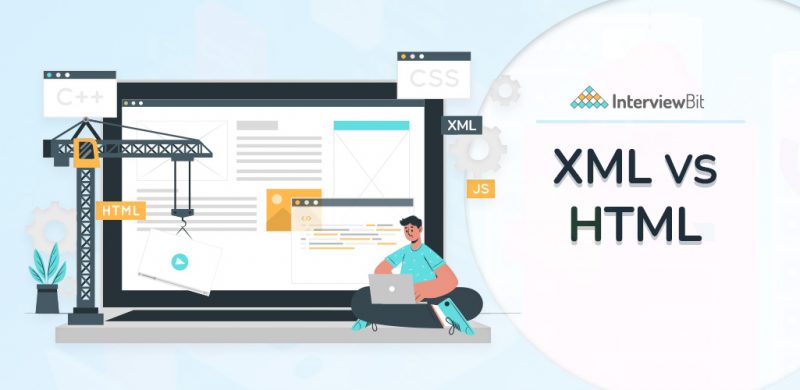Introduction
When it comes to creating web pages, two fundamental languages stand out: HTML and XML. These languages play crucial roles in web development, but they serve different purposes and have distinct characteristics.
HTML, short for Hypertext Markup Language, serves as the foundational language that provides the foundational structure for all websites. On the other hand, XML, or Extensible Markup Language, offers a versatile approach to structuring and storing data. It’s crucial to have a solid understanding of these two languages to grasp their distinct roles and capabilities.
First, let’s delve into what HTML and XML are before we explore their differences. By the end of this discussion, you’ll be equipped to distinguish between the two on your own!
Confused about your next job?
What is HTML?

HTML stands for HyperText Markup Language. It was developed by Tim Berners to create electronic or web pages. Each page is connected to another through hyperlinks. Everything that one sees on the web is developed using HTML. HTML allows the embedding of images and texts on web pages. There have been different versions of HTML, and HTML5 is the latest one. It forms the basis of web development projects giving them structure and basic design. HTML consists of tags and attributes. Tags are written within the angle brackets(<>), and the attributes with quotes.
For example,
<p text-align=’center’> </p>
Here, p denotes a paragraph tag, and the attribute text-align aligns the text as per requirement. The tag with a slash(/) denotes the end of the element.
HTML are case insensitive. If the codes are written syntactically, no errors arise, and the machine understands it within no time. The files written are stored with a ‘.html’ extension and are accessible through all text editors.
Features of HTML
- It is an easy and simple language to understand. The codes are understandable by everyone and are modifiable.
- Web pages can be prepared using HTML as it includes many tags.
- It allows for designing web pages with content of choice.
- It provides hyperlinks to other pages making the browsing process feasible.
- It is independent of the operating system. It runs the same on Windows, Mac, Linux, etc.
- It allows the addition of graphics, videos, and sounds to the pages making it very attractive.
- It can be easily integrated with scripting and styling languages such as Javascript, CSS, etc. giving it dynamic nature
Read More About: HTML Features
Advantages of HTML
- It is a widely used Markup language and is easy to learn.
- It does not involve any specific software and is free to use.
- Codes can be written from text editors like notepad and hence do not require any additional application.
- Usage of the Canvas element (<canvas>) allows developers to add lots of graphics.
- The application cache feature allows the storage of big files.
Disadvantages of HTML
- Pages might require a lot of code which might become complex to handle.
- HTML alone cannot make a page authentic. It needs CSS and JavaScript for that. Pages are static if HTML is the only technology used.
- Dynamic pages are not easy to create. HTML creates static pages.
What is XML?

XML stands for Extensible Markup Language. Unlike HTML, XML is used to store data and not to display. It is widely used to transfer data. As this is a markup language, it is easily readable by humans as well as machines. XML is hardware-independent. XML allows us to use elements and develop customized markup language. XML allows users to create tags of their own; That is, they are self-descriptive. It was developed by W3C in 1996, with XML 1.1 being the latest version. Like HTML, XML tags are written between angular brackets(<>).
Example,
<Data>
<Name>John Wick</Name>
<email>johnwick123@gmail.com</email>
<Contact>+14327635278</Contact>
</Data>
XML is used to wrap information around the tags. In the above example, we can see that the personal details of John Wick are wrapped under the Data tag. Details such as name, email, and contact are further wrapped inside Name, email, and Contact tags respectively. This makes the transfer of data from one medium to another feasible.
XML is case-sensitive. The codes are accessed, written, and modified by all the text editors and are saved with the ‘.xml’ extension.
Features of XML
- XML eases the storing of data by storing them in plain text format. This is easier to retrieve than the storage formats of databases.
- XML files make data transport easier in the case of applications that are incompatible in rendering other data formats.
- XML is compatible with reading machines making data accessible to blind people and people with other disabilities.
- XML is extensible. It allows users to create self-descriptive tags in any language based on the application requirement.
Advantages of XML
- Easy storing and transport of data.
- It supports multilingual text and Unicode.
- Easy to learn and code.
- It enhances data availability.
- Platform change is simplified.
- It makes data sharing very easy as it stores them in plain text form and is independent of the software and hardware.
Disadvantages of XML
- No intrinsic data type is supported.
- The syntax is redundant.
Difference Between HTML and XML
HTML and XML serve distinct functions in the world of web development. HTML is primarily designed for creating web pages, and it functions as a hypertext markup language. Whereas, XML is a versatile language used for organizing and exchanging data. Now, let’s explore some key differences between HTML and XML.

| Basis | HTML | XML |
| Casing | Case insensitive. | Case Sensitive. |
| Tags | HTML has pre-defined tags. Users can use the tags as per their need to create web pages. | XML allows users to create tags. This way, users can create tags of their choice in any language as per their needs. |
| Purpose | Its major purpose is to display or present the data. | Its major purpose is to store and transfer the data. |
| Errors | Minor errors get ignored. | Errors disrupt the transfer or storing of data and must be corrected. |
| White Spaces | White spaces cannot be used in HTML. | White spaces can be used in XML. |
| Nesting | Does not pose a major error if nesting is not followed accurately. | Nesting should be done accurately to evade errors. |
| End Tags | Every tag used requires an ending or a closing tag | Few tags like <br>, <hr>, <img>,etc do not have an ending or a closing tag. |
| Object Support | HTML has native object support | XML needs object to be expressed using attributes. |
| Formatting Decision | Data is directly mapped with the application. | Mapping XML data to the application is not direct and requires significant working on it. |
| Document Size | The size of an HTML document is relatively small as syntax is brief and contains formatted text. | The size of an XML document is relatively large as the codes and the approach of formatting are lengthy. |
| JavaScript Integration | No additional application is required to parse JavaScript code into the HTML document. | Requires Document Object Model(DOM) to parse in JavaScript codes and mapping. |
| Learning | HTML is relatively easy to learn because no additional technologies are included. However, HTML alone is a presentation of the raw data. | XML is relatively difficult as it includes learning technologies like XML DOM(Document Model Object), XPath(XML Path), Schema, etc to parse and format the data in the XML document. |
Conclusion
Both HTML and XML are markup languages that deal with the data. It is interesting to know that both of these emerged from Standard Generalized Markup Language or SGML and responds either directly or through AJAX in a browser upon requests. HTML displays the data whereas XML stores and transfers the data from one machine to another. Though both are markup languages, there is a lot of difference between their working. It is important to learn both HTML and XML because they serve as the structural and integral part of every website or application.
Frequently Asked Questions
Q: Should I use XML or HTML?
A: It depends on the purpose. If the purpose is only to display content, HTML is better. However, If the data is too rich with information, XML has better browser adaptability and functionality with regards to sharing or transporting the data compared to HTML.
Q: What is the relationship between HTML and XML?
A: HTML stands for HyperText Markup Language and XML stands for eXtensible Markup Language. Thus, the relation between both is that they are markup languages, that are used to highlight elements in a web document and can also be understood by both humans and machines.
Q: IS XML front end or back end?
A: XML is neither front end nor back end. It is a markup language that is used to store and transport data in a website or application.
Q: Can I use XML in HTML?
A: Yes. XML codes can be embedded in HTML documents using the <xml> tag.
Q: Is XML used today?
A: Yes. JSON is the major competitor of XML to parse information to the browser which lacks the expressive qualities and validation when compared to XML. Thus, XML is still used despite JSON’s popularity.
Q: What are some advantages of XML over HTML?
A: Few advantages of XML over HTML are that XML simplifies the data sharing, separates the data from HTML, eases platform changes, and flexible tag creation.




